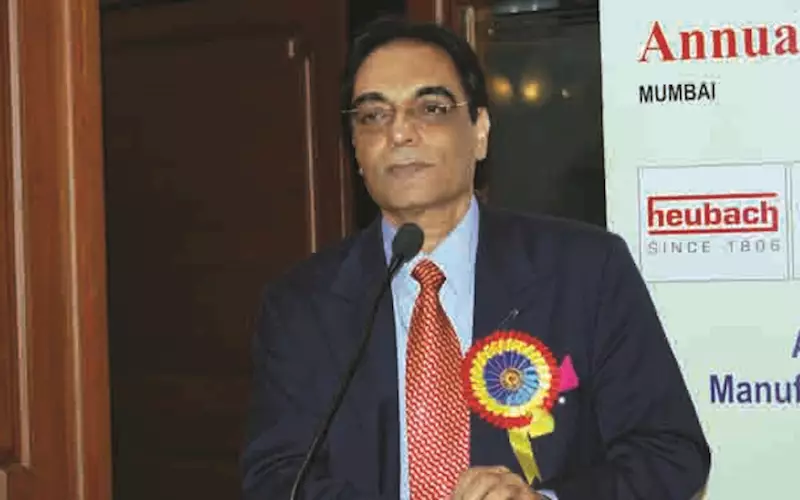Ink volume growth rate down from 15 to 18% to 7 to 9%
With a market size valued at approximately Rs 5000 crore, the Indian printing ink industry is bearing the brunt of changing market scenarios. BS Kampani, editor, Ink News explains the number game of printing ink industry.
03 May 2017 | By PrintWeek India
In today’s context the printing ink market size in India is approximately Rs 5000 crore. With an overall consumption/production of 248 million tonnes, including sheetfed offset, web offset (cold and heat, both), gravure, lamination and surface, flexo, corrugation and high end surface, UV/ LED/ EB offset and publication, screen printing and can coatings.
The average growth rate of 15 to 18% by volume and 9 to 10% by value five years back, have scaled down to 7 to 9% by volume and 5 to 6% by value. This phenomenon seen briefly for two reasons:
One, the base of printing ink market ten years back was very low, compared to China, Japan and developed European countries. Growth (18% - 20% and value growth of 10-14%) being in the mid and low-end of the price market, owing to regional and local growth in commensuration leading to installations of printing machines. For instance, we saw the offset customers’ base growing from 125,000 to 400,000 printers.
Two, 50% of the single and double colour machines have been replaced by multi-colour printing presses of the 1990 to 2005 models with average speeds of 4,500rpm to 9,000rpm, using primer coat or high end spray powders to avoid set of during high speed printing, exceptions being new generation of five and six colour with coaters machines being installed by large volume quality packaging printers. Because of India’s print volume growth the same was the story one saw on web offset, gravure and CI flexo presses.
In offset, we saw the entry of high speed Japanese machines at economical prices compared to European manufacturers. In web high speed, the European players continue to dominate, but for small to medium runs, in mid and smaller cities, Indian manufacturer Manugraph maintained the lead of a preferred supplier.
In lamination gravure, European, Chinese and Indian machine manufacturers, until the last year continued to have tremendous growth in press and pre-press, both in terms of quality, speed and capacity building. International players like Amcor, Huhtamaki, Constantia and domestic players like Uflex continue to add capacity with innovative products, thereby helping to sustain growth rates for a growing consumer market in India.
In the last four years, other than packaging and digital printing, maintaining a growth rate of 12 to 14% by volume and value growth average 11 to 12%, commercial, books , screen, metal decorating have had a minimal or negative growth respectively. The over print varnishes, both aqueous as well as UV, have seen a phenomenal growth compared to the solvent based spirit varnishes.
Despite downward trend in newspapers growth story worldwide; India continues to enjoy healthy readership trend; purely owing to increase in population. But the question is for how long? Today, the younger generation is getting used to alternate source of news (courtesy mobile phones). We are also noticing that in English and local language newspapers, the number of pages are going down.
Most of the significant newspaper houses like Times Group and HT Media have diversified into education and healthcare, knowing that commercial publications would become unviable owing to the cost of production and digitisation trends catching up in mid- and high-end income groups and cities.
In packaging, the lighter weight packaging with 20 to 25% less ink film deposits have decreased the volumes, but increased the value, quality, etc. As such, we do notice increase in average prices in mid and high-end packaging inks.
From an average price of USD 2.75 per kg few years back, we have an average price of USD 3.10 per kg. It is still lower than China and the global average price of USD 4.25 per kg, the US and Japan being the highest in the range of USD 4.75. Again, the Indian rupee has devalued substantially from Rs 56 to Rs 65. This also indicates that while volumes are on the increase, the share of the mid and high-end continues to increase, while the printing machines are being upgraded for quality and volumes.
Newer technologies dedicated to a particular system in packaging are being sustained on a stand-alone basis with sufficient volume base to support the manufacturers’ investments. So the Indian ink prices on global front are much cheaper than the average global prices, indicating that while dealing with India global ink players would have to be in sync with the Indian affordability ink prices considering its per capita income of the huge consuming population is much less than the developed economies, from where the trends and technologies flow into India. With food packaging compliant inks, matching the Swiss regulations accepted by the US, European and Japan indirectly, the raw material prices of compliant raw materials would increase, as such the contribution of the average ink prices in India too would rise, inching closer to the global averages, unless the government brings down its taxes for the industry to remain competitive in the global marketing place for a Make in India strategy.











 See All
See All